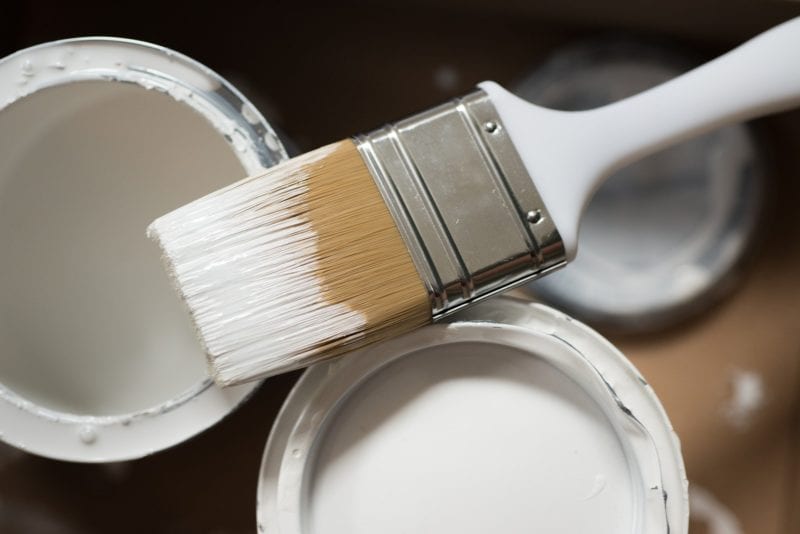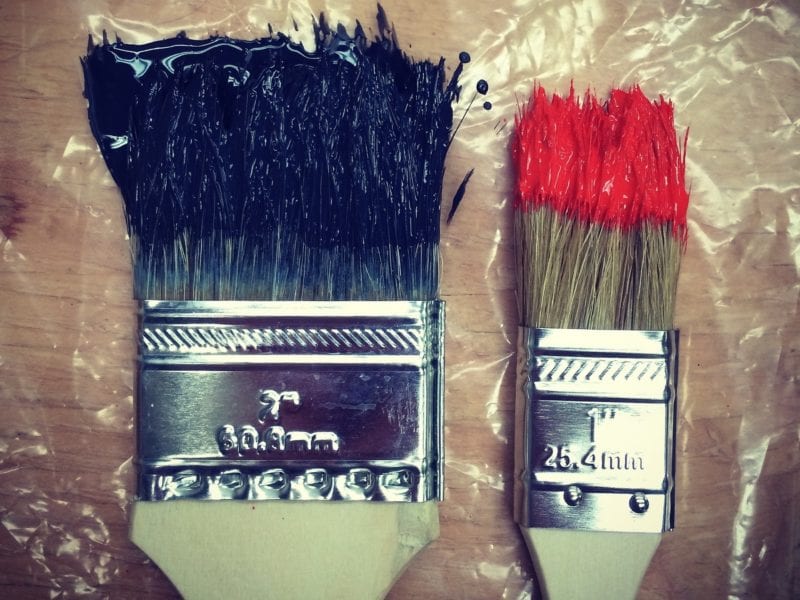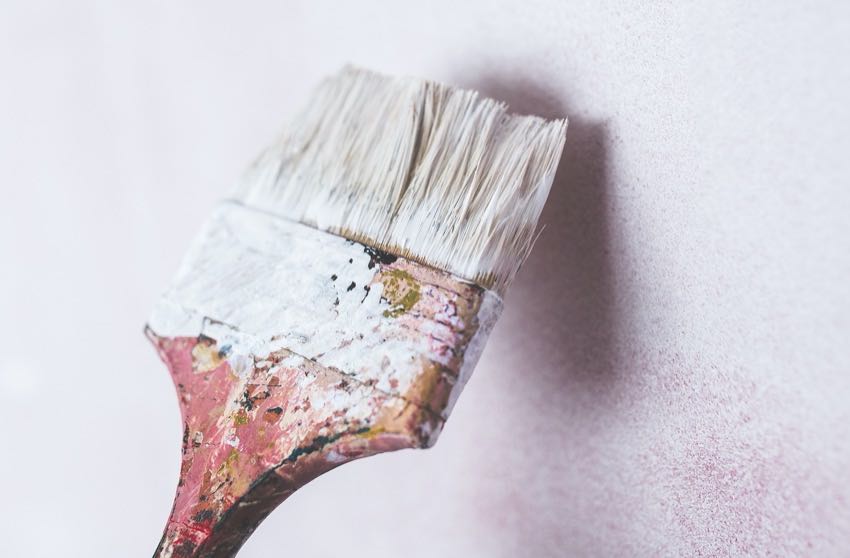You can’t always use an airless paint sprayer for all of your paint jobs, so if you don’t want to have to buy a paintbrush every time you paint, then it’s important to learn about caring for and cleaning paint brushes you purchase. Doing so will ensure long life and repeated use for years to come. One thing most people don’t realize is that the package your brush came in can be used to help the brush retain its shape. Consider this before throwing away that resealable plastic or paper wrapper (ever wonder why it was resealable?). Choosing the right paintbrush is just the first step. Let’s make sure that great brush stays great and gives you years of use.
Cleaning Paint Brushes with Water or Acrylic Paints
For water-based or acrylic paints, clean the brush in warm, soapy water and rinse with a tap or outdoor spigot. Do this until the water runs clear. Avoid leaving your brush soaking or sitting as this will likely result in a permanent bend in the bristles. Spin the brush in your hands (preferably outdoors) to remove excess water, and then comb the bristles with a brush comb or wire brush to remove any remaining built-up paint on the bristles or ferrule. Hang the brush up, or lay it flat to dry, and then return the brush to its package.

If for some reason your paint brush isn’t coming completely clean, realize that some paint additives provide special adhesion to different surfaces. As a result, you may actually need to use some solvents (like those recommended for oil-based paints) in order to free up any remaining paint on the brush.
Cleaning Oil-Based Paints off Paint Brushes
For oil-based paints, you’ll want to use a similar method, but you’ll need to work the brush in a small bucket of solvent like mineral spirits or paint thinner. You may need to do this a few times (each time with clean solvent) until the brush is completely clean or paint.
When done, shake out the excess thinner and then wrap the brush in either wax paper or aluminum foil. Again, be sure to either hang it or lay it flat to allow it to retain its proper shape. Avoid rinsing out any oil tools in water since this can make the bristles dry out over time and become brittle. If you want to keep your oil-based bristles soft, try applying some petroleum jelly before storing. To remove the Vaseline, just rinse the brush in paint thinner (and shake it dry) prior to its next use.
What If It’s Too Late?
Did you mess up and forget to properly clean and store your favorite brushes? You can probably get it back with a little elbow grease. Just soak it in the appropriate solvent (for water or oil) and then loosen any stubborn paint with a wire brush. If it doesn’t work immediately, you can switch to alcohol or lacquer thinner to loosen up leftover shellac or lacquer from a prior job. If all else fails a nice dose of TSP (trisodium phosphate) typically does the trick.

Conclusion
When you’re done be sure to wrap the brush and hang it or lay it flat until its next use. Of course, you can avoid all that by cleaning paint brushes quickly after each job.



